November/December 2012
Wandering Through the Ruins
Turkey’s Mediterranean & Aegean Coasts
We’re sitting beside the water, along the shores of the Dardanelles Straits.
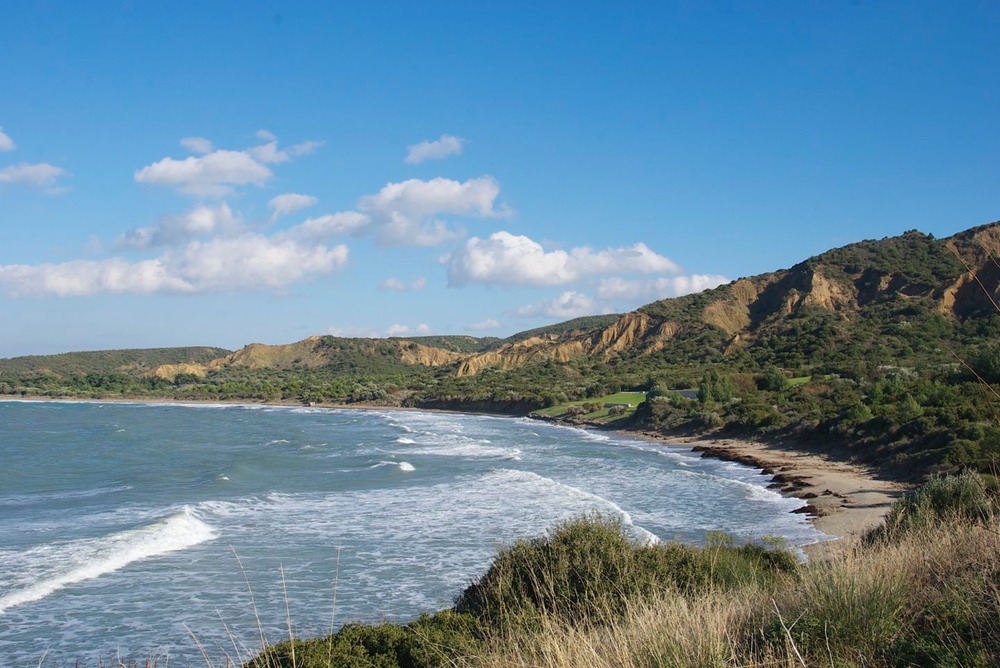
In Turkish it’s the Çanakkale Boğazi. You remember them? The year was 1915. The word Gallipoli resonates for us, but that’s just a town known to the Turks as Gelibolu; the peninsula being fought over was the Gelibolu Yarimadasi. It was a nasty time in a nasty war and the Turks were somewhat reluctantly allied with the Germans. Winston Churchill, then First Lord of the Admiralty, thought that if the Allies could defeat the Turks here, they could open up a critical route to the Black Sea through the Bosphorus a little further upstream, attacking Istanbul along the way, and thus open up a Balkan front with Russian support. So the British threw a whole bunch of Aussies and Kiwis and other Colonials (along with British and French troops) at this strip of land. The Turks, led ferociously by Colonel Mustapha Kamel (later Atatürk) said No Way; and thus history was written. Kamel later became president and the founder of the modern Turkish state, while Churchill was sacked (but later regrouped and we all know how he ended up). Both became legends. Now that’s a simplified version, but it’ll do.
The Greeks called this spot Hellespont, and trying to cross it was the stuff of many a story and as many battles. Lord Byron almost died here trying to swim across, in 1810. These days the crossing is very quick, and quite easy, by ferry. Cost us 29TL, about $15. But, you say, how did you get to the Dardanelles?
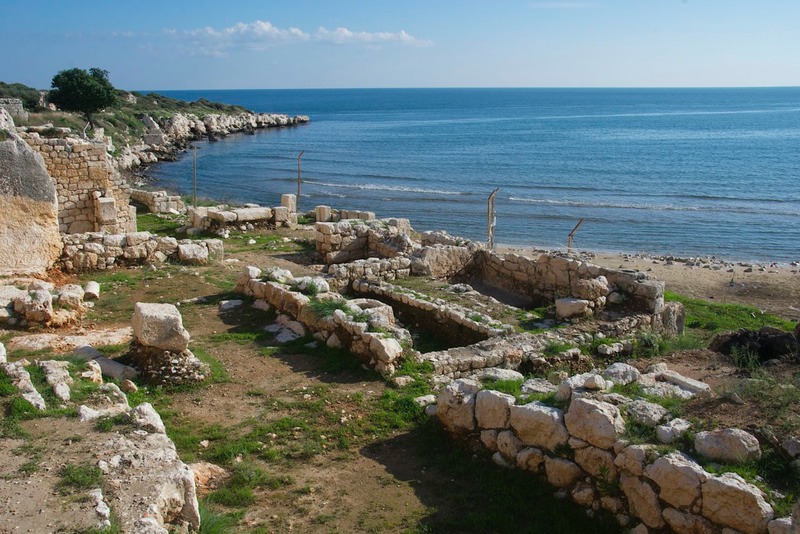
About a month ago, we dropped down out of the mountains (with winter fast approaching) and arrived on the southeastern coast of Turkey, not far from Tarsus. Great: the coast was sunny and warm. We liked this a lot, and spent a lovely week parked beside a bay near the eastern end of the Mediterranean Sea. It looked exactly like we had pictured it, with sand and banana palms and citrus fruit everywhere and Roman ruins just across the way. Nifty.
Finally gathering ourselves together we began to move west; there were ruins to be visited, sunsets to be watched, interesting inland towns to search out, and much more. And now, at the western end of Turkey, closing in on the Greek border, we can declare the journey a huge success.
The coastline alternates between rugged mountains coming all the way to the water, and flat open areas; the road west (D400) wanders it all. A traveler could just stay on D400 and have a great time, moving from one beach to the next; but -- being curious bears -- we also took side roads up those mountains to see what was on the other side. It all was swell.
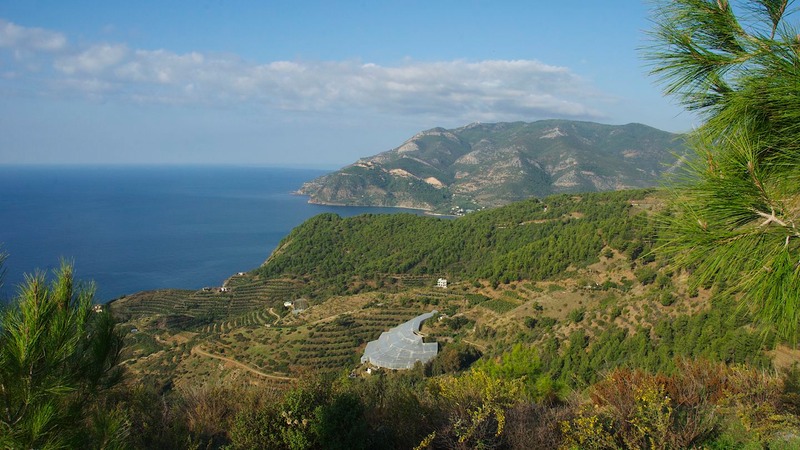
All the flat areas are covered with fruit and vegetable production. The more tender plants are covered with portable greenhouses (polytunnels, the English call them). The plastic can be a bit of a scene-spoiler, but we’ve decided it’s just fine – after all, they are growing those goodies just for us! Tomatoes and strawberries, lettuce and pole beans, pomegranates, apples, and citrus trees of all kinds; Turkey’s salad bowl. As we’ve gotten further west, the aforementioned have been joined by groves of olive trees, often cheek by jowl with the pomegranates. This adds a lovely new color to the palate as the olive trees maintain their lovely gray-green while the pomegranates go bright yellow with a bit of orange thrown in.
Along the way we’ve seen some pretty terrific ruins left from long ago civilizations. Some of them are very familiar -- the Greeks and Romans were all over this coastline. But they were the new boys on the block. You’ve also got your Hittites, Phrygians, Lycians, Pisidians, Pamphylians, and on and on. By the way, in Turk Speak, the “Ly-SEE-ans” of our western classical education have become the “LICK-ians” instead. All together now: “Who Knew”?
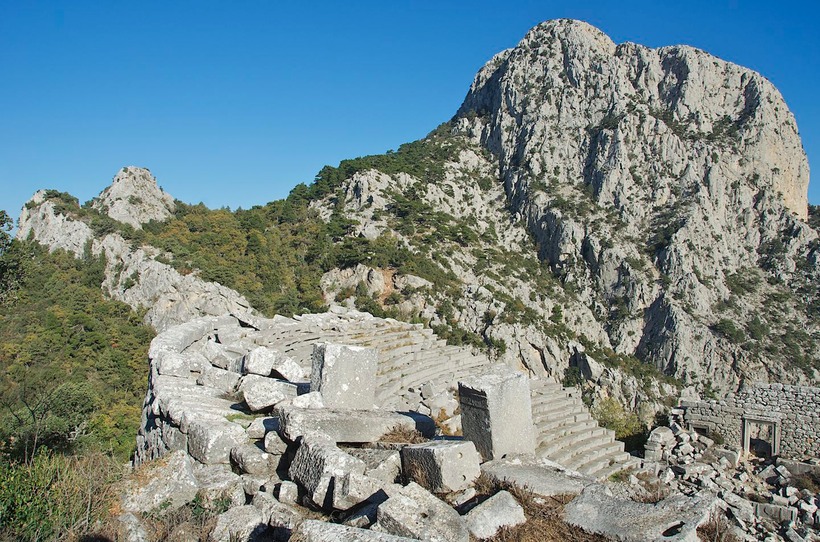
We love wandering through the ruins. For the most part, we’ve been very much alone, and as the quiet descends a sense of history envelops you, of times past. At Termessos, near Antalya, we climbed a bloody steep hill (for us), up to the remains of a large theater set on the edge of a mountain overlooking the surrounding area. It was impossible not to think of all those guys hauling those stones up there, the fellows sitting and carving them to fit, the feeling of accomplishment when they looked at what they had made. Not only had they built a fine theater for their entertainment, but they had placed it so that they could also enjoy a terrific view out over the mountains and even enjoy a lovely sunset during an evening performance. People lived all their lives surrounded by these magnificent structures; it was an honor for us to be able to visit.
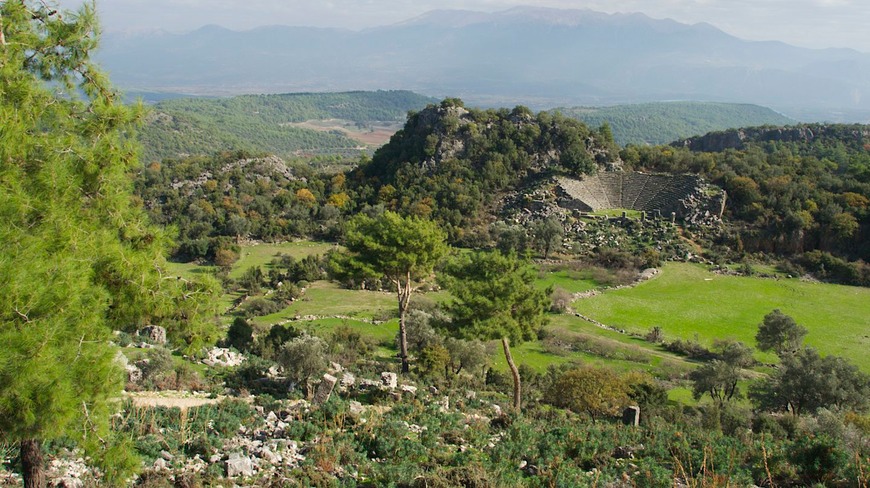
The theaters have continued to be a treat everywhere we’ve seen them, often best viewed from across a valley (up close they can be rather tattered and messy). Some, however, have been remarkably well preserved. At Priene, a Greek settlement not far from Selçuk, one of the smallest, most complete and cutest little theaters we’d ever seen suddenly appeared out of a rain cloud, with a rainbow to back it up. It was quite enchanting.
At Termessos, and then again at Pinara, not far from Fethiye, we saw amazing rock tombs. The Lycian Peninsula is full of them. You go trucking along the highway, look up, and there they are. Some of them are free-standing, but many of them are dug right into the hillside. They are very pretty, because the rock face is sort of orange-y when the surface has been scraped away, so the tombs really stand out. Very photogenic.
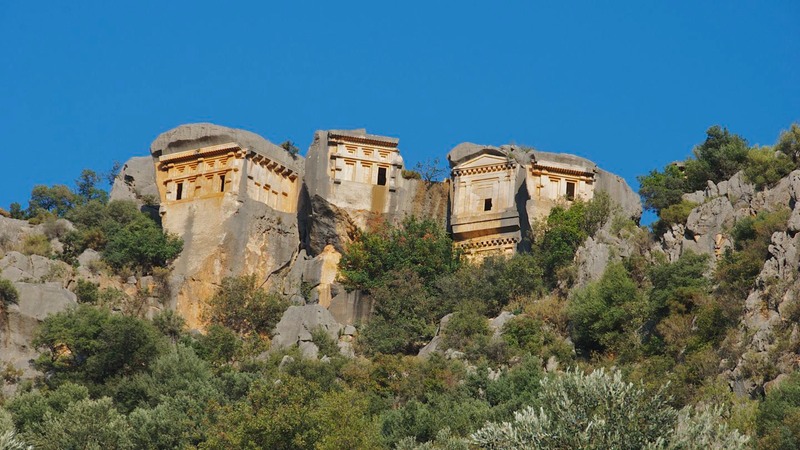
As we puttered along, we tried to choose sites that were less known, more remote, and had a reputation for being interesting but not a tourist draw. In this we were remarkably successful. We never felt inundated with folks, there rarely were tourist stalls or touts to greet us, many of the sites were free and open at all hours, and sometimes we were welcome to stay the night.
One spot where we wished we’d visited at a time when we could just stay was when we visited Cyaneae, a remote site up in the mountains between Finike and Kaş. This place will always be special to us. To find it we had to make our way up a steep gravel road, high onto a promontory that then opened onto a meadow where we could find room to park.
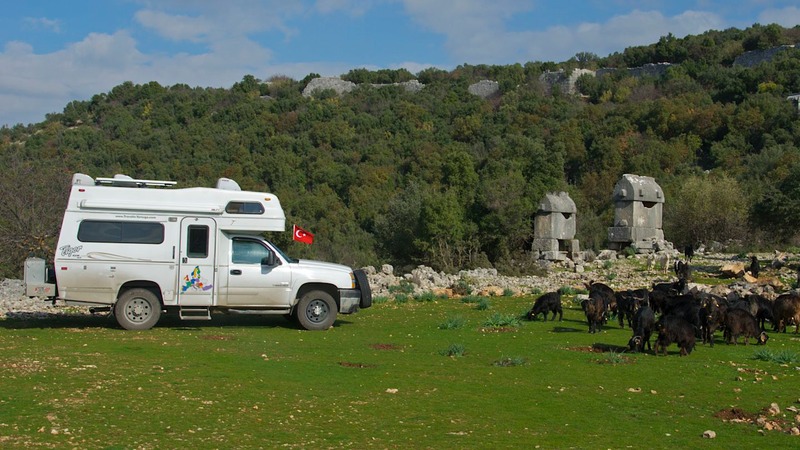
We were there to visit the free-standing tombs that “littered” the hillside surrounding the area where we were parked. We poked around among them, really enjoying the sunshine and chance to explore how they were made. We thought about who might have once been buried here. Then we heard a familiar clink-clink-clink and were joined by goats. A small herd came through, taking their time chomping the new grass that grew around the stones. A herder followed, carrying his umbrella in case of a change in the weather, along with a broken-open shotgun over his arm and a dog to keep him company.
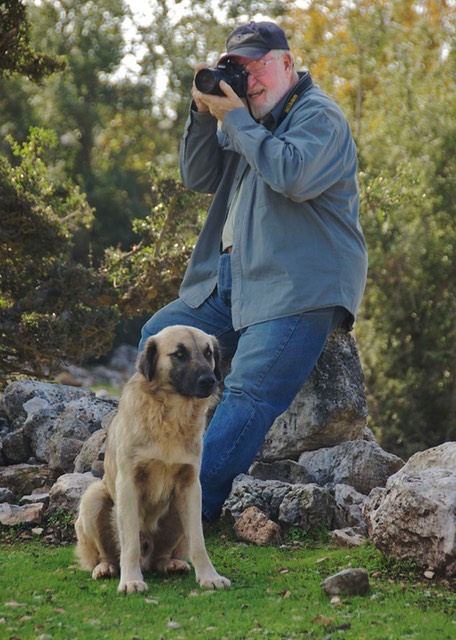
We exchanged greetings without a word in common except “hello” and “welcome.” He was visibly delighted we had joined his world – his expressive gestures made this quite clear. It was paradise to him and we were now part of it. He finally moved on, his dog staying to keep us company for an hour or so; then we heard a whistle and the dog trotted off. The goats, of course, moved on as they mowed the grass. Here’s an update from 2018. In visiting Namibia, we went to see the cheetahs at the wonderful Cheetah Conservation Fund site near the town of Otjiwarongo. You can read about our visit by going to our Africa page, but the point of this update is that as a major part of CCF's education efforts in aid of the cheetah, they also raise and train Anatolian Shephard guard dogs exactly like the one we met here in Turkey. We enjoyed learning a lot about the dogs and how they protect “their” family of goats or sheep and of course immediately remembered this photo and our magical day at Cyaneae.
As we moved further west along the coastline, the countryside became more and more classically “mediterranean.” It made us stop and think – what is “Mediterranean” anyway? To us, it’s rocky hillsides, olive and citrus trees, and goats. Ojai, California comes to mind.
The small villages we passed through were mostly rustic and worn out, particularly inland; the houses were often badly in need of repair and many were in ruin. It was apparent that rural Turkey lags far behind the modern cities that lay elsewhere. These were, however, working communities. There were farmers in the fields, cows and goats and sheep were everywhere, and people were busy. Well, many were busy; as in every country we’ve visited, each hamlet had a group of men sitting outside enjoying the afternoon sunshine and each other’s company. Dominoes or card games seemed to be the norm. The women, of course, were very busy doing everything you always see them doing: guarding grazing animals and wandering children, hauling wood and fodder, sitting on the back of the tractor on the trip into town.
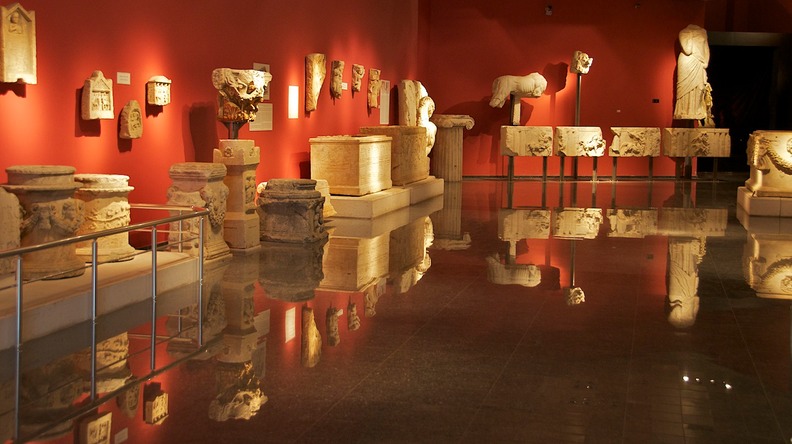
The biggest city along the southern coast is Antalya, and we had a fine time there. La Tortuga developed a case of the hiccups (a recurring and frustrating engine trouble code problem) so we spent a morning seeking someone to take a look at her; eventually with some success. More importantly we visited the excellent Archeological Museum. Wow, what a jewel this is. We enjoyed it tremendously and would recommend it to anyone; much more interesting to us than the renowned (and also excellent) national museum in Ankara. Lots of history, terrific artifacts and all beautifully displayed. It was a real treat!
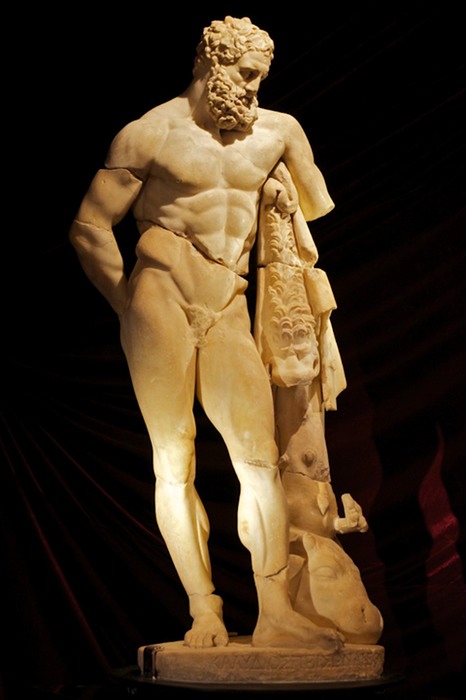
The southern coast of Turkey is a mecca for folks seeking winter warmth, be it the cruising crowd, the motorhoming crowd, or those flying in for a holiday. We were able to enjoy several of the coastal communities that are winter destinations. Finike was a good spot, and we wished we’d stayed longer. It has a nice harbor area that’s quite close to the small, very pleasant downtown.
Rick wasn’t feeling so well when we were there, and we thought about finding a clinic; but in the end we moved on, ending up in Kaş, where we did get him to a doctor. Turned out they didn’t really know what was causing the ugly rash on his face and the swelling and fever, but got him some antibiotics and the whole mess cleared itself up in the next couple of days. As is often the case, it was probably about done anyway, but I had gotten concerned. And now I felt better. The clinic was efficient, they spoke enough English for us all to feel we were understood, and not overly expensive. The visit was 80TL and antibiotic and ointment together totaled 36TL; that all translates to about $65.
Kaş, by the way, is a real charmer. There is enough British presence to ensure western food is available, you hear familiar voices speaking, and the dogs are all on leashes and well behaved. We only spent one night there, and it was at a beach east of town, Büyük Çakil, a lovely spot in a small cove. We were glad we had stopped.
The beaches were all lovely, by the way; we spent many nights tucked alongside, enjoying the view and the breezes. It is an incredible coastline. Somewhere along the way, a German fellow now living in Turkey rode up on his small scooter as we were parked on the beach and insisted we accept the small Turkish flag flying from the back of the scooter; we proudly post it each evening as we come to a halt for the night. The Turks seem to be a very patriotic people and flags are seen everywhere -- on vehicles, houses and buildings of all sorts. We now feel right at home and hope that folks enjoy our display.
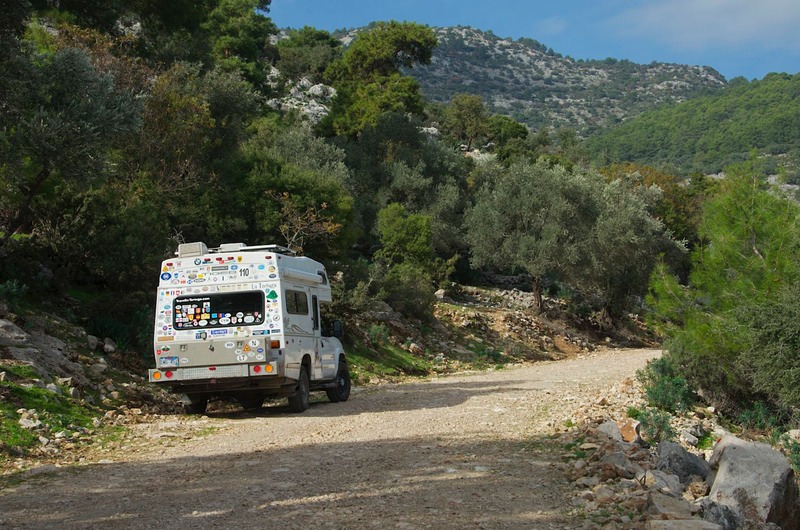
Leaving Kaş, we were drifting toward Fethiye, where we were meeting up with some folks. There were several sets of interesting ruins in the area, including Pinara (see above) and Tlos, both of which we thoroughly enjoyed. But along the way we found another great location -- a spot beside a lagoon, just behind the dunes and right next to the Med. We spent a couple of days there, all alone except for a bridal party that came by for a photo shoot. Turkey seems to be prime territory for bridal couples; they seem to like having wedding photos taken in exotic (or just plain odd) spots. They have a great time, and end up with fun pictures to boot.
We arrived in Fethiye, not sure what might be there, and were delighted with our visit. It’s a great town, larger than Kaş, and with more to offer. Again, a large expat presence, and a marina filled with cruising vessels. We enjoyed a very large fresh produce market, with the best carrots and mushrooms I’ve had in years. And fresh cheeses to die for. And…and…and. You get the picture.We had a lovely time with new friends; his mother lives in San Luis Obispo and is a friend of a friend; she had introduced us.
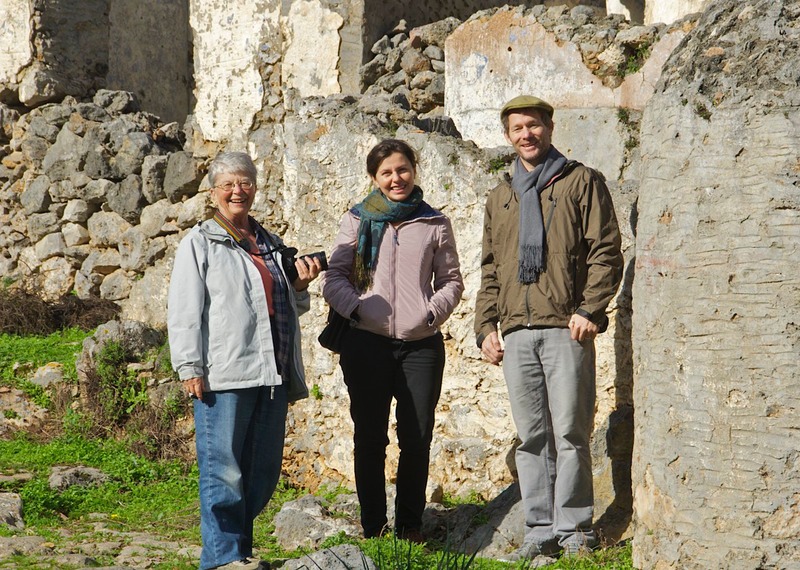
Dano and his wife, Ayse, used to live in Kaya Köyü, the nearby deserted town that was abandoned in 1923 during the Turkish nationalist period when Turks and Greeks were forced to leave each other’s countries. This town was never really resettled, and with a few exceptions stands deserted today. We spent a morning there; it’s a very sad place in a beautiful valley. A terrible waste. Later in the day we moved on from Fethiye, knowing it would be a nice place to come back to, and hoping to return in the spring. But onwards!
In case you think Turkey is only for goats-sheep-cows, we have now seen camels! We have learned that in some of the coastal areas, camels (as work animals) are rather common. The first time we were quite startled. We had come around a corner only to find ourselves immersed in an enormous herd of goats being moved along the highway. We’d never seen so many all at once; there were at least 6 people running back and forth among hundreds of the creatures, keeping them moving and going in the right direction, raising a huge cloud of dust in the process.
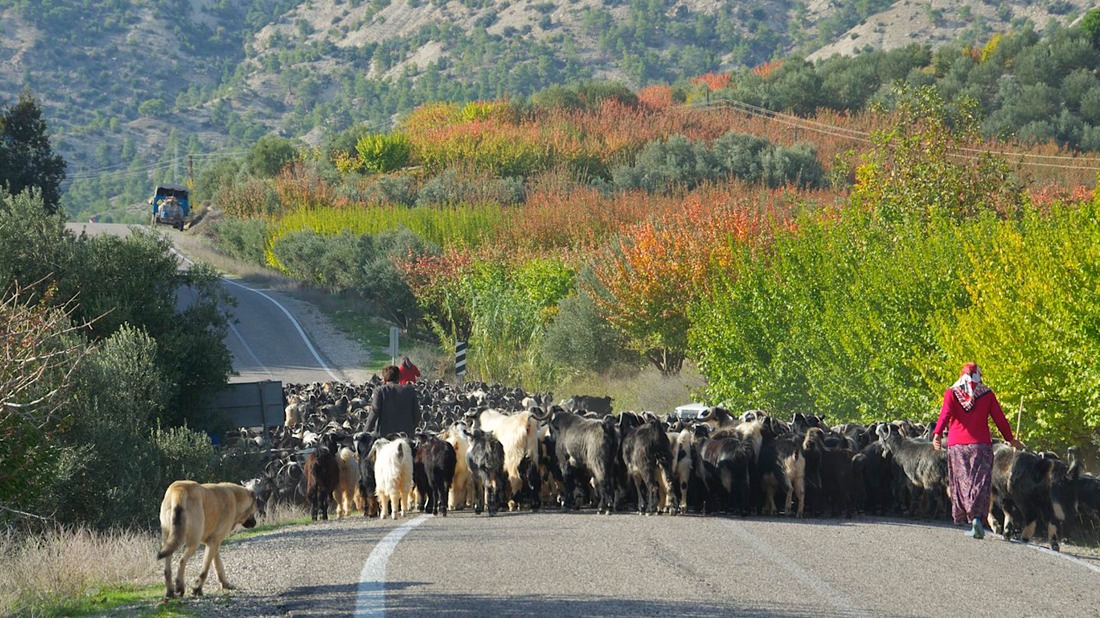
There were two women among the herders, and they were really working hard; goats pretty much go where they want to. We think they may have been on their way to winter pasture.
Oncoming cars were just plain buried in the animals. Trucks going both ways were pulled off the road, and the critters were streaming around us as we sat dead in the water. It was quite an event. We finally made our way through, went around the next corner, and it’s then that we saw a bunch of camels. With no warning, we plunged right into them. After everything was settled down again, and we had a chance to think about it, we decided that the whole group was probably traveling together; it looked like the camels were being used as pack animals. What an adventure!
It may be milder here along the coast, but it’s definitely fall. The colors are still quite brilliant in areas, and when we get into the mountains a bit, there are often folks off into the forest, picking mushrooms (and we see hunters as well). People are dressed warmly, and in the mountains it’s very cold at night; after one night at 30℉ we vowed to make sure we would be at sea level each evening thereafter. Brrrr!
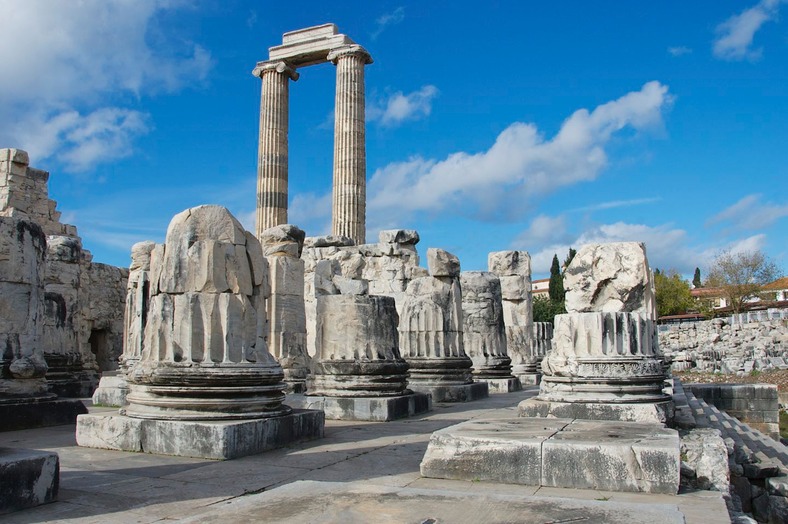
There has only been one group of ruins (so far) that we’ve failed in our attempt to reach. Apollonia is a remote city off the Lycian Way that sounded quite interesting, best known for its necropolis. The book said you could hike to it from one spot, but that it was several miles. Then the book said you could drive to the small village of Kılınçlı (also known as Siçak), which was most of the way. Well, hah! We got to the hamlet with two names, which was as far off the beaten path as I think we’ve ever been, but were unable to pick up a trail to go further. A very nice farmer came up to us, speaking excellent English. When he found out what we wanted, he just shook his head, saying it was several hours’ walk and ill-advised. One of the few times we’ve had to abandon our plans. But a lovely drive through a beautiful area.
As we’ve moved west we’ve begun picking up rainy weather from time to time. Not much so far, but we know our charmed life is going to end soon. One night we got hail, and the nearby mountains had new snow the next morning. There are many heavy black clouds in our future, and downpours. So we’re taking advantage of every ray of sunshine. What an incredible fall!
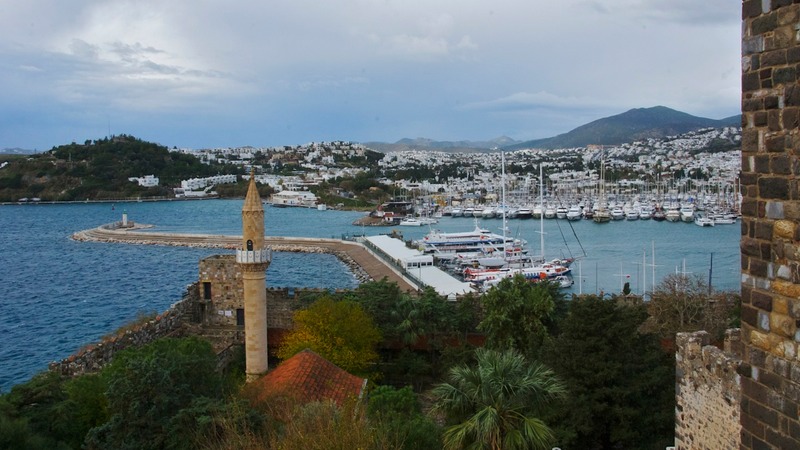
Finally we turned the corner at the western end of the Turkish Mediterranean, and headed up the Aegean coast. This coastline is filled with famous ancient cities: Troy, Halikarnassos, Pergamon, Ephesus, Herakleia just for starters. There are amazing ruins every few miles. And there are many other worthwhile sites as well, further inland. We wanted to see some representative locations, but by now were running out of time. So we picked a few of the smaller ones, and enjoyed each very much.
We also stopped in Bodrum (Halikarnassos) to see the castle, and also its very interesting Underwater Archaeology Museum. Such a misnomer; made you think the whole structure was in an aquarium. The castle (1406) itself is really cool; it got our vote for Best Castle Since Wales (and that’s really saying a lot!). A great structure, and with plenty of access, it’s all a castle should be, complete with armor and flags, dungeons, etc. All the cool stuff.
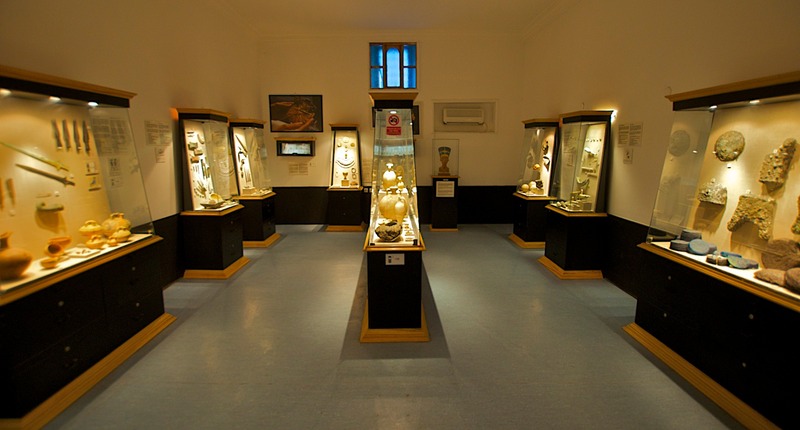
But it’s the museum that really got us. It has several sections, and they are housed in various parts of the castle, so you wander into a wing and here are nifty things and then you wonder over to another tower or dungeon for the next set of cool stuff. The gems for us were sections of and artifacts from several ancient vessels that had sunk in the area, the earliest dating back to the 14th century BC. We were blown away by what had been recovered. Our visit was hampered by heavy rains at time, but we persevered and enjoyed it a lot; got soaked clean through walking back to the Tiger though.
We had decided to skip the ruins at Ephesus; every description we could read told us we’d already seen the same things at smaller sites. But we did want to go to the museum in Selçuk that featured some of Ephesus’ best finds. Foiled again: the museum is closed for reconstruction. We’ve been fortunate in our time in Turkey that we’ve not had this happen often; mostly we’ve been at museums after they’ve finished their work and have been able to enjoy their fine efforts. Ah, well.
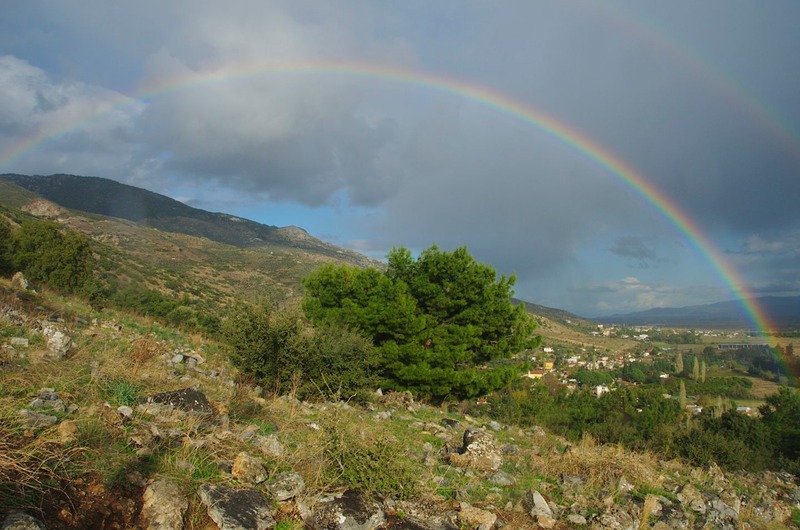
So on we went, ever further north along the Aegean coast. More and more rain coming down, and it’s increasingly cold. Time to go. We used some of the rainy weather to drive on up to the Gelibolu area. After waiting out a couple of days of heavy rain, we woke to a sparkling, clear day and went out to see the sights. It was all quite interesting, and we learned a bunch more about the events of 1915. We visited ANZAC cove, stopped at monuments and graveyards and generally had a good time.
The only bizarre event was the first of the day. We were headed for the visitor’s center, and wound up at a brand new building that was still being completed. We were given an escorted tour of the exhibition halls and sat through 11 different visual presentations. Ultimately we weren’t all that impressed; it was sound and light intensive, with 3D glasses and shaking floors but pretty light on content. We commented that the Turkish film industry had certainly been active. The Turks probably love it.
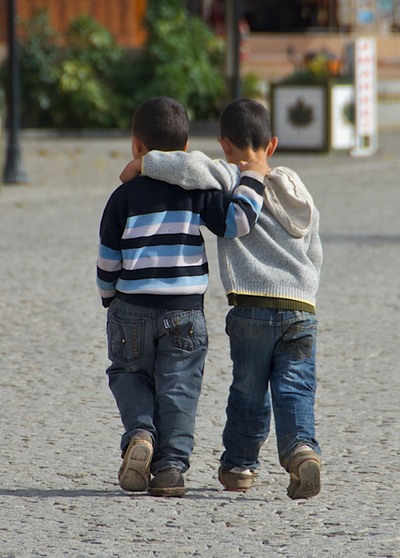
So we’re finished with Turkey for this year. On the 14th we completed our required 90 days outside the Schengen area and could reenter. We crossed the border into Greece with no problems, and are now settled in Alexandroupolis at a campground there. And, guess what! We thought it was cold before? Last night it was 23℉ (that’s -5℃ for you European types). Time to get out of here; Rick is muttering about no more Decembers in Europe and it sounds like this time he means it.
On the 17th we fly out to Athens and then to Houston the following day. We’ll be home for Christmas and until about the end of March, when we will retrace our footsteps back to Turkey. There is still a whole lot of this interesting country for us to see.
It’s been a hell of a good year, and we’re excited about our plans for 2013. Love to all of you from Rick, Kathy and La Tortuga (who’s worried because sometimes it snows in northern Greece – lots. She’s whingeing and wants to sit on our laps on the airplane).
Click to see more photos from Turkey's Mediterranean & Aegean Coasts